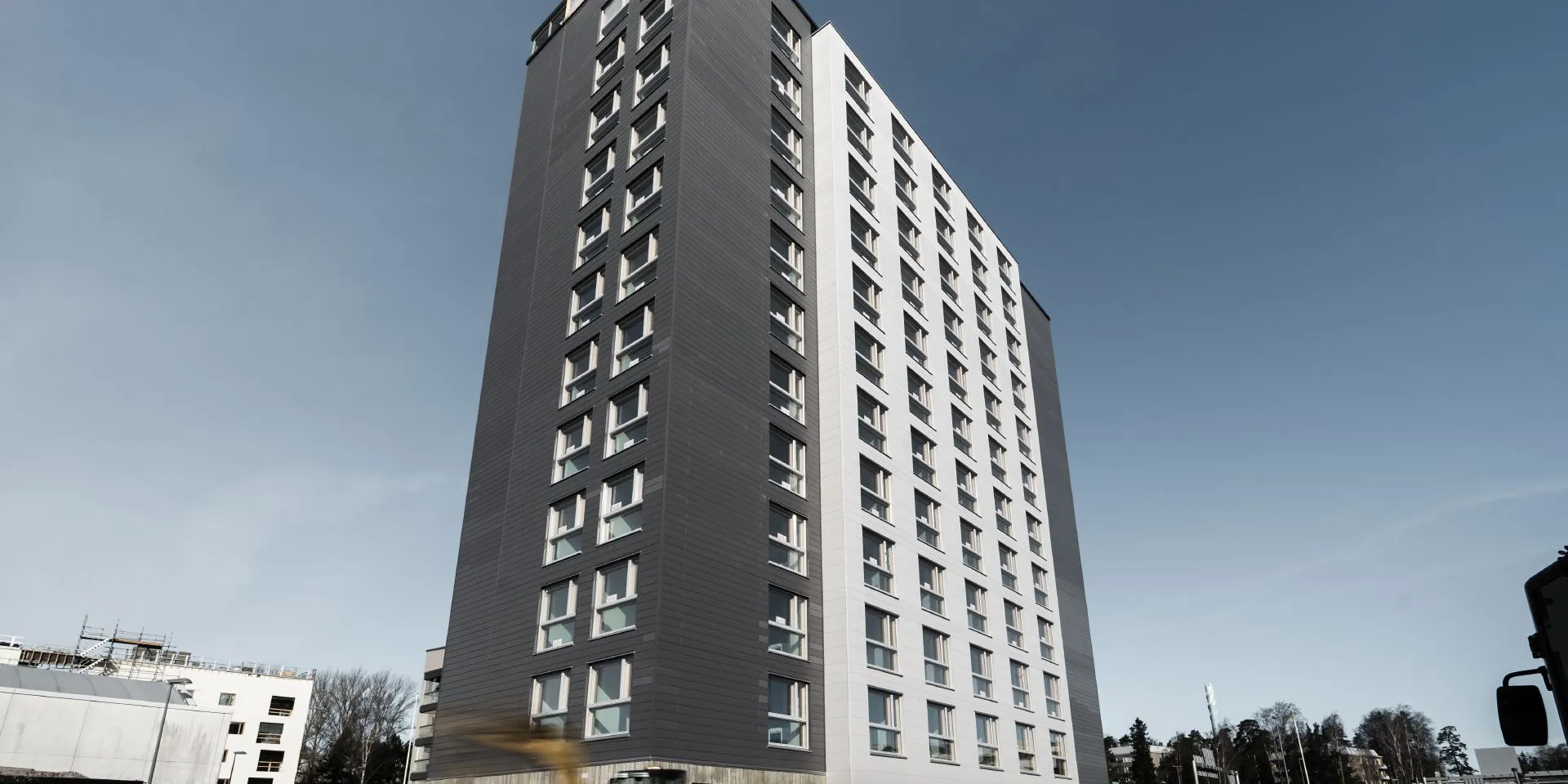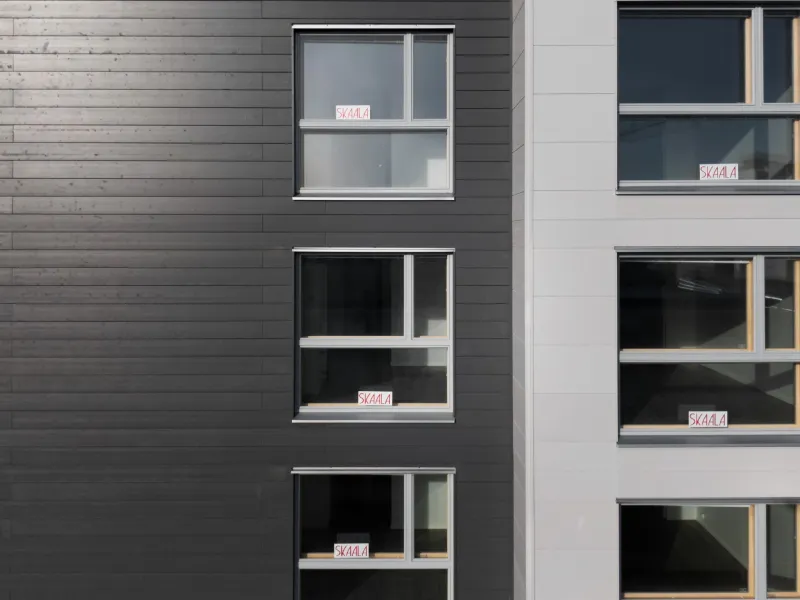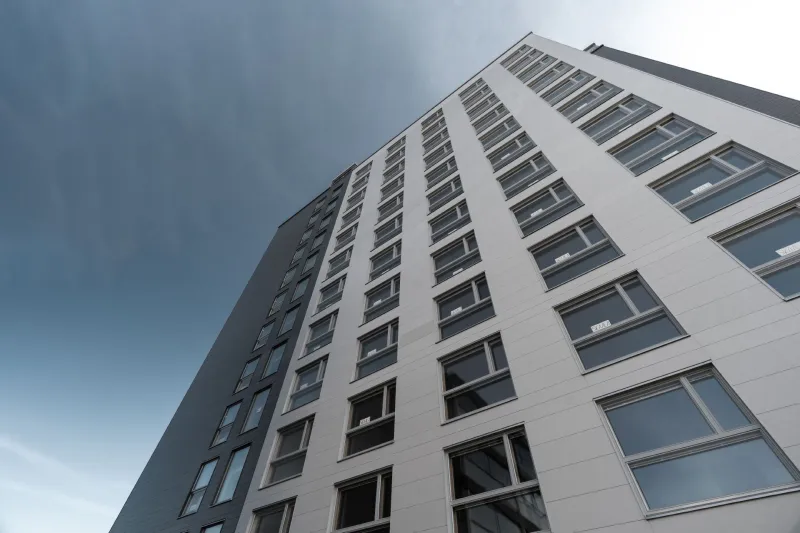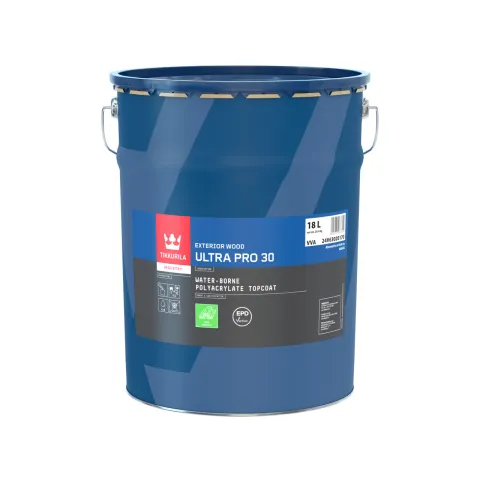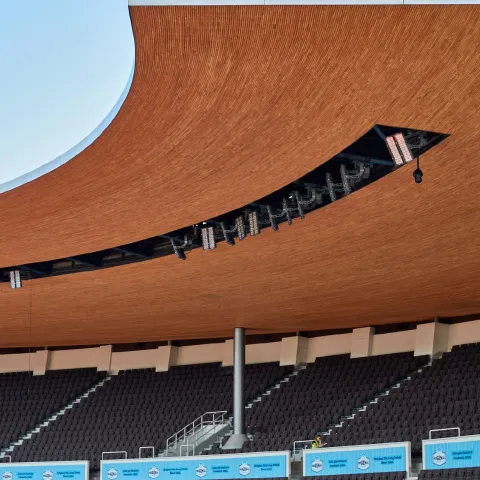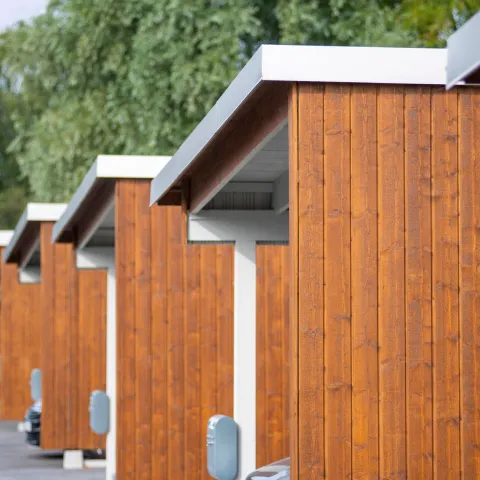A unique facade solution for the world's tallest wooden apartment building
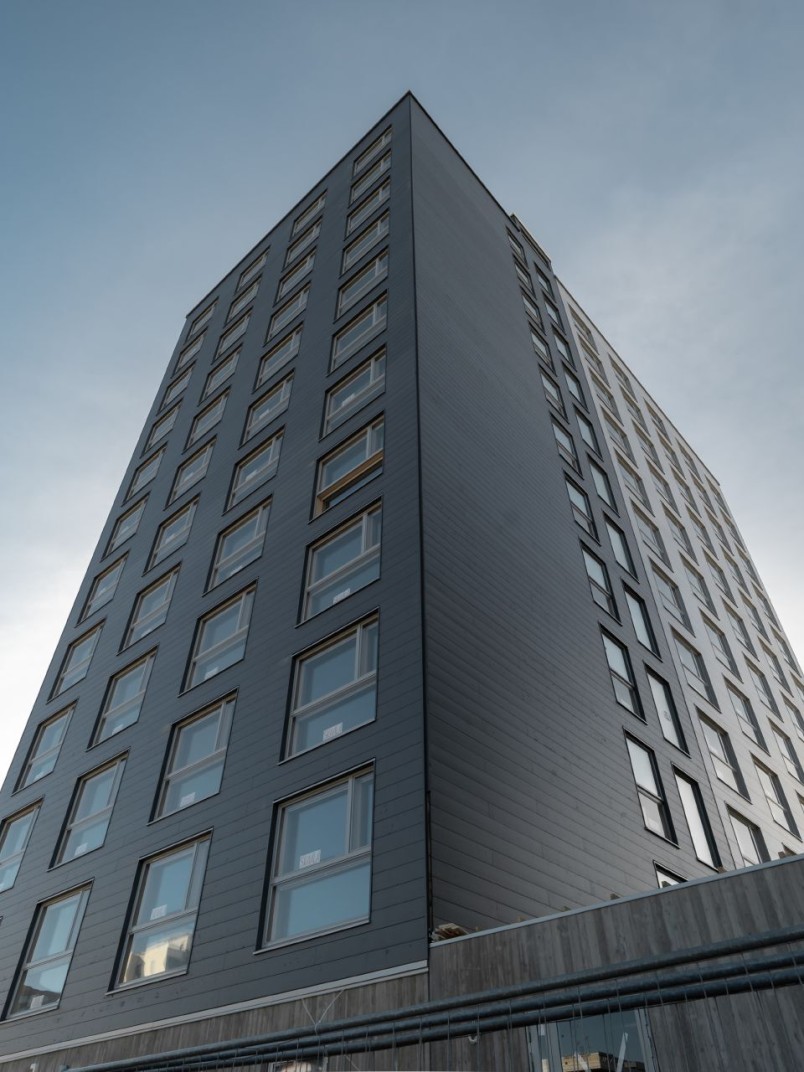
In summer 2021, a majestic wooden apartment building will be completed in the centre of Tapiola, Espoo, comprising 154 studios and 11 family apartments.
The 13-storey Hoas Tuuliniitty, built by the Foundation for student housing in the Helsinki region, is reportedly the tallest wooden apartment building in the world built of prefabcricated elements. The housing elements were completed and furnished, including household appliances, at the Elementti-Sampo factory in Kuhmo, from where they were transported to Espoo and lifted into place on site.
The facade solution for the modular wooden apartment building is the new CLT facade panel, only 20 mm thick, installed with concealed fastening. The Platta facade panel developed by Siparila Oy enables diverse facades and speeds up the construction process. The structure is a cross-laminated three-layer spruce board, making the panels light to handle and durable in use.
"We decided to use cross-laminated layered board, as it was found to be the most functional and has the least expansion and contraction of wood. Platta achieves a wide, plate-like surface and provides a more striking facade than narrower panels. The lightweight product is also efficient to instal: ready surface is created quickly," says Olli Prättälä, Sales Director, Industry at Siparila.
The innovative facade solution was paired with a reliable surface treatment
The panels are pre-painted on the Siparila line, which protects them from moisture and the wearing effect of UV radiation. The installation of the facades with concealed fastening further improves durability: water and impurities will not damage the wood through nail heads.
"A product with concealed fastening was ideal for the site. Weather resistance is greatly improved when the paint film is not broken with fastenings," Prättälä states.
Siparila and Tikkurila have a long-standing partnership. A functional surface treatment solution for Hoas Tuuliniitty's unique facade was sought by joint experimentation.
"We performed a lot of weather tests on the surface treatment system to make sure it is suitable for the CLT panel. Ultra Pro adheres well directly to wood and is flexible even in cool temperatures; after all, moisture makes wood move to varying degrees in length and width, and the surface treatment must be flexible with the movement. The background of the facade panels has also been treated with Ultra Pro, which contributes to slowing down the absorption of moisture into the wood," says Joni Repo, Key Account Manager, Wood Industry Paints at Tikkurila.
An impressive facade is aesthetic and technically durable
At Hoas Tuuliniitty, the facade must withstand significant wind loads and exposure to weather. In addition, the facade architecture of the wooden apartment building, constructed in a prime location in the centre of Tapiola, was designed to be even more striking with vertical outlines.
"The facade solution of the building was determined by both technical requirements and aesthetic values. The structure of the panels combined with surface treatment and fastening solutions ensure an intact surface against the weather. The concealed fastening prevents, for example, the formation of cavities or pockets that collect moisture," says the architect for the building, Jukka Turtiainen, from Arkkitehtipalvelu Oy.
"This is a tall, relatively massive building in a prominent location. The facade architecture needed to have vertical outlines, colours and structure. At first, with the structural designer, we decided to use a combination of thick horizontal wood panel and steel plate, but Siparila’s panels came to market at just the right time, and we decided to change the steel for CLT panels. They meet the engineering requirements and give the wooden building aesthetic value," Turtiainen says.
Wood construction is growing in popularity
Both Prättälä and Turtiainen see strong growth in wood construction. As a sustainable and renewable building material, and one that also contributes to the comfort of living, wood will be used increasingly and in more versatile ways in the coming years.
"Wood is currently in strong demand. We have operations in five locations and have made significant investments to increase capacity in our factories. We also export a lot of wood," Prättälä says.
"Wood construction is becoming mainstream. In housing design, wood has many good properties: thermal bridges are more manageable, and wood promotes diverse construction. From an architectural point of view, wood is already more of an enabling than a limiting factor," Turtiainen states.
